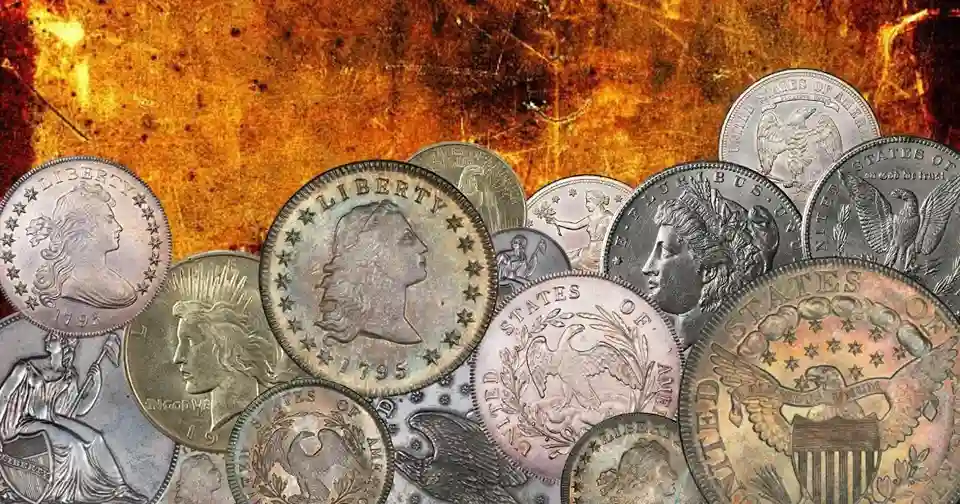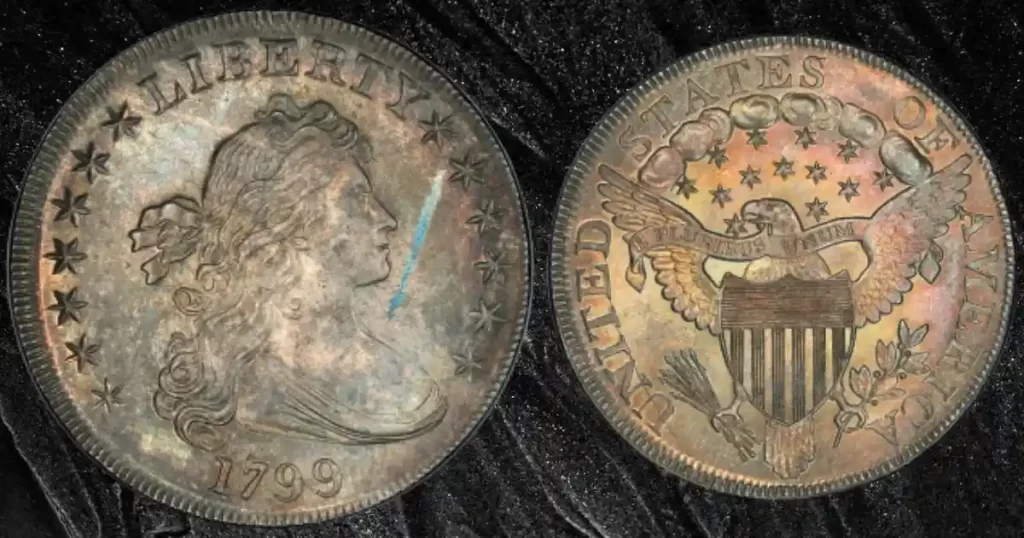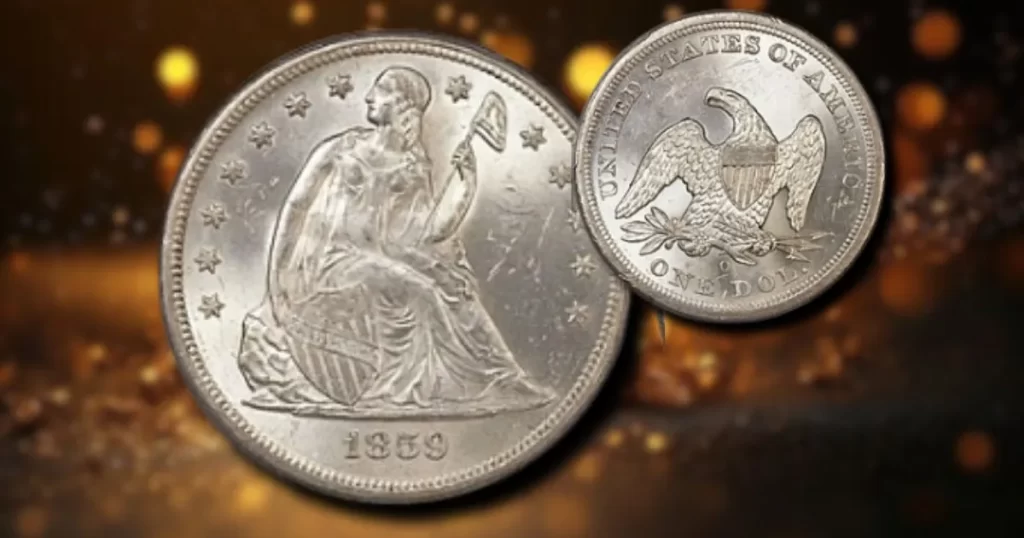Silver dollars are an important aspect in the history of American coinage, representing the economic strength and historical events of the United States. For collectors and history enthusiasts alike, understanding the history and types of silver dollars is crucial in appreciating their importance.
History of the U.S. Silver Dollar:
The silver dollar was officially started after the Coinage Act of 1792, which established the U.S. Mint and the American dollar as the nation’s official currency. After that silver dollar was introduced with the first design, the Flowing Hair Dollar, minted in 1794. This marked the beginning of a long lineage of silver dollars that would come to reflect the evolving history and identity of the United States.

Types of U.S. Silver Dollars:
Flowing Hair Dollar (1794-1795):
The first U.S. silver dollar, known as the Flowing Hair Dollar, was minted between 1794 and 1795. It features Lady Liberty with flowing hair on the obverse and a simple eagle on the reverse. It is one of the most prized coins among collectors due to its rarity and historical importance.

Draped Bust Dollar (1795-1804):
The Flowing Hair design was soon replaced by the Draped Bust Dollar in 1795. This design was used until 1804 and featured a more refined portrait of Lady Liberty. The 1804 Draped Bust Dollar is especially famous as the “King of U.S. Coins” due to its extreme rarity and value.

Seated Liberty Dollar (1840-1873):
The Seated Liberty Dollar marked a new era in American coin design, with Liberty seated holding a shield and a pole topped by a liberty cap. This design was minted from 1840 to 1873, a period that was very important for political and economic changes in the country, including the Civil War.

Morgan Silver Dollar (1878-1904, 1921):
One of the most famous and widely collected of all U.S. silver dollars, the Morgan Dollar was first minted in 1878 and continued production until 1904. It was again introduced in 1921. The coin is named after its designer George T. Morgan and is known for its detailed design and historical importance during the Industrial Revolution.

Peace Dollar (1921-1935):
The Peace Dollars, minted from 1921 to 1935, symbolizes America’s desire for peace in World War I. Its unique design, featuring a serene Lady Liberty on the obverse and a perched bald eagle on the reverse, stands out among other U.S. silver coins for its message of peace.

Trade Dollar (1873-1885):
Designed for use in international trade, particularly with China, the Trade Dollar had a higher silver content than other U.S. dollars. However, its use in domestic circulation was discontinued, making it a rare collectible today for many collectors.

Gobrecht Dollar (1836-1839):
Designed by Christian Gobrecht, this short-lived series was a precursor to the Seated Liberty dollar. It was notable for the eagle in flight on its reverse, a break from the static eagle designs of earlier coins.

American Silver Eagle (1986-Present):
The American Silver Eagle was first minted in 1986, the American Silver Eagle is the modern-day U.S. silver bullion coin, containing one troy ounce of 99.9% pure silver. While not a circulating silver dollar, it continues the legacy of silver dollars in American coinage and is highly prized by both investors and collectors.

Conclusion:
The history of U.S. silver dollars is as rich as the coins themselves. Whether you’re a numismatist or a beginner in coin collecting, understanding the different types of silver dollars can increase your appreciation and knowledge of American history. From the Flowing Hair Dollar to the modern American Silver Eagle, these coins are timeless symbols of the nation’s economic and cultural journey.



